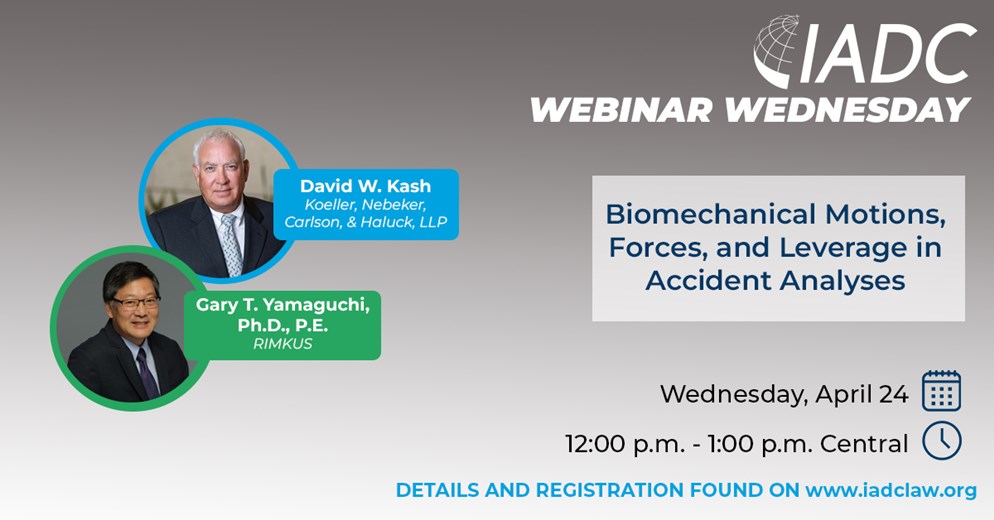
Biomechanical Motions, Forces, and Leverage in Accident Analyses
This Webinar will discuss biomechanical motions, forces, and leverage in accident analyses. How changes in motions produce forces, and how a biomechanical engineer analyzes these forces to determine whether the injuries are consistent with the claims will be covered. This Webinar will also look at biomechanical motions, forces, and leverage in automotive and premises liability cases with premises liability examples such as slips/trips, seat failures, falls, etc. We will give an in-depth look at the accident that happened in Phoenix involving the first autonomous vehicle to pedestrian fatality and the future of self driving technologies.
Takeaways:
- Forces are produced by changes in motion, and forces exerted at a distance can exert high leverage on body tissues.
- High accelerations of unrestrained parts of the body can produce large forces, tissue overloads, and injuries.
- Because of leverage, disc herniation injuries are more likely to be created by lifting than by low-speed rear-end accidents.
MODERATOR:
David W. Kash, Koeller, Nebeker, Carlson, & Haluck, LLP, Phoenix, Arizona USA
PRESENTER:
Gary T. Yamaguchi, Ph.D.,P.E., RIMKUS, Phoenix, Arizona USA
---
For information on any upcoming Webinar, please visit the Webinar page on the IADC website.
For assistance with registration, please contact Meetings Coordinator Maddie Pangyarihan. For all other Webinar questions, please contact Professional Development Manager Jennifer Aron.